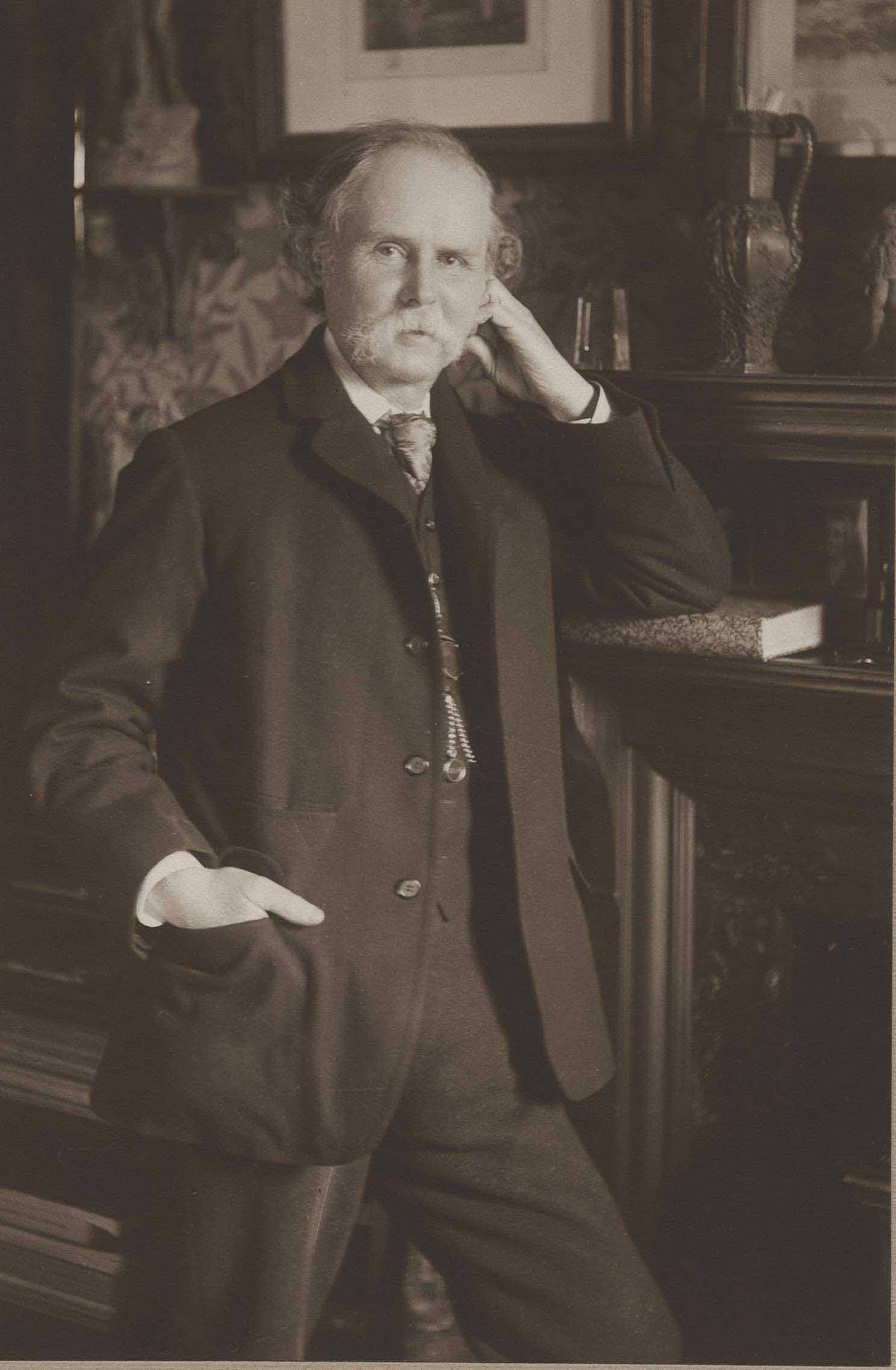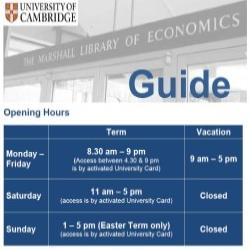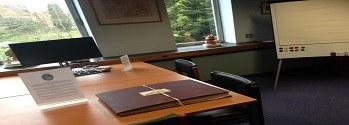Origins
 The origins of the present Marshall Library lie in the small Moral Sciences Library created by Professor Alfred Marshall and Professor Henry Sidgwick from 1885 onwards, largely through the donation of their own books for student use. This library was situated in the Divinity School opposite St. John's College. Following the struggle to establish Political Economy as a subject in its own right, the Economics books were transferred to the keeping of the Special Board for Economics and Politics in 1906. In 1909 J.M. Keynes became the first formally appointed Librarian of the collection, thereafter known as the Departmental Library of Economics. In that year there were only 11 Part I students and 8 studying for Part II.
The origins of the present Marshall Library lie in the small Moral Sciences Library created by Professor Alfred Marshall and Professor Henry Sidgwick from 1885 onwards, largely through the donation of their own books for student use. This library was situated in the Divinity School opposite St. John's College. Following the struggle to establish Political Economy as a subject in its own right, the Economics books were transferred to the keeping of the Special Board for Economics and Politics in 1906. In 1909 J.M. Keynes became the first formally appointed Librarian of the collection, thereafter known as the Departmental Library of Economics. In that year there were only 11 Part I students and 8 studying for Part II.
After Marshall
Alfred Marshall died in 1924, leaving many of his books and money to the Library. The two collections were merged and re-named the "Marshall Library of Economics" in his memory. The great expansion of the collection necessitated its move in 1925 to rooms in the former Balfour Laboratory off Downing Street. Ten years later it moved again to the recently vacated Squire Law Library premises (now the Haddon Library). Alfred's widow, Mary Paley Marshall acted as a volunteer librarian at these two locations for nearly twenty years, until she retired at the age of 87. From 1925 until her death in 1944 she gave £250 annually to the library. In addition, she bequeathed £10,000 to the University "for the development and increased usefulness of the Marshall Library". The final move to the present building in Sidgwick Avenue, which was designed by Sir Hugh Casson, took place in the early sixties.

Part of Alfred Marshall's card catalogue



